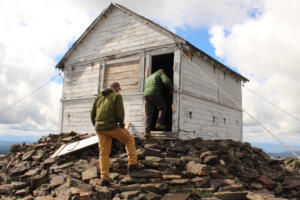Back in 1967, people were electrified by the movie, “The Graduate,” especially the scene of 40-something Anne Bancroft seducing 21-year-old Dustin Hoffman. But there was another iconic moment, when one of his parents’ friends definitively pronounces one word to Hoffman’s character that would assure his future business success: “plastics.”
A half century later, the world is being choked by plastic waste from huge items to the smallest micro bits, each causing a slow death to our beautiful living system. As I revisited this non-regenerative life cycle of many pieces of plastic lodged in my brain and yours, it suddenly reminded me of something I learned about in the 1970s about the nuclear fuel cycle.
When Prop 13 was on the California ballot encouraging us to vote for nuclear energy — guaranteed to be cheap, clean and efficient — my husband and I joined with others to explore this too-good-to-be-true source of energy. We soon learned that what we were not told was that the waste from the power plants would be toxic for 250,000 years and could not be safely stored or protected against earthquakes or terrorist attacks.
Dealing with radioactive materials was and still is a very serious threat to one’s health — if not to life itself. In response, for one year we gave talks and educated others about the deadly life cycle of nuclear fuel — mining the uranium, transporting the raw material to a nuclear plant where the fuel would produce energy through the fission process, storing the spent fuel rods in cooling ponds and deconstructing the nuclear plant at the end of its approximate 20-year life of producing that “cheap, clean and efficient” energy.
But the critical question was, and still is: What do we do with the spent fuel material? Shooting it into space was one idea. Storing it in caves or deep areas in the ground was another suggestion. But for a quarter-million years? Under whose watch? And at what cost? (Hint: the cost is at least $300 billion and counting).

